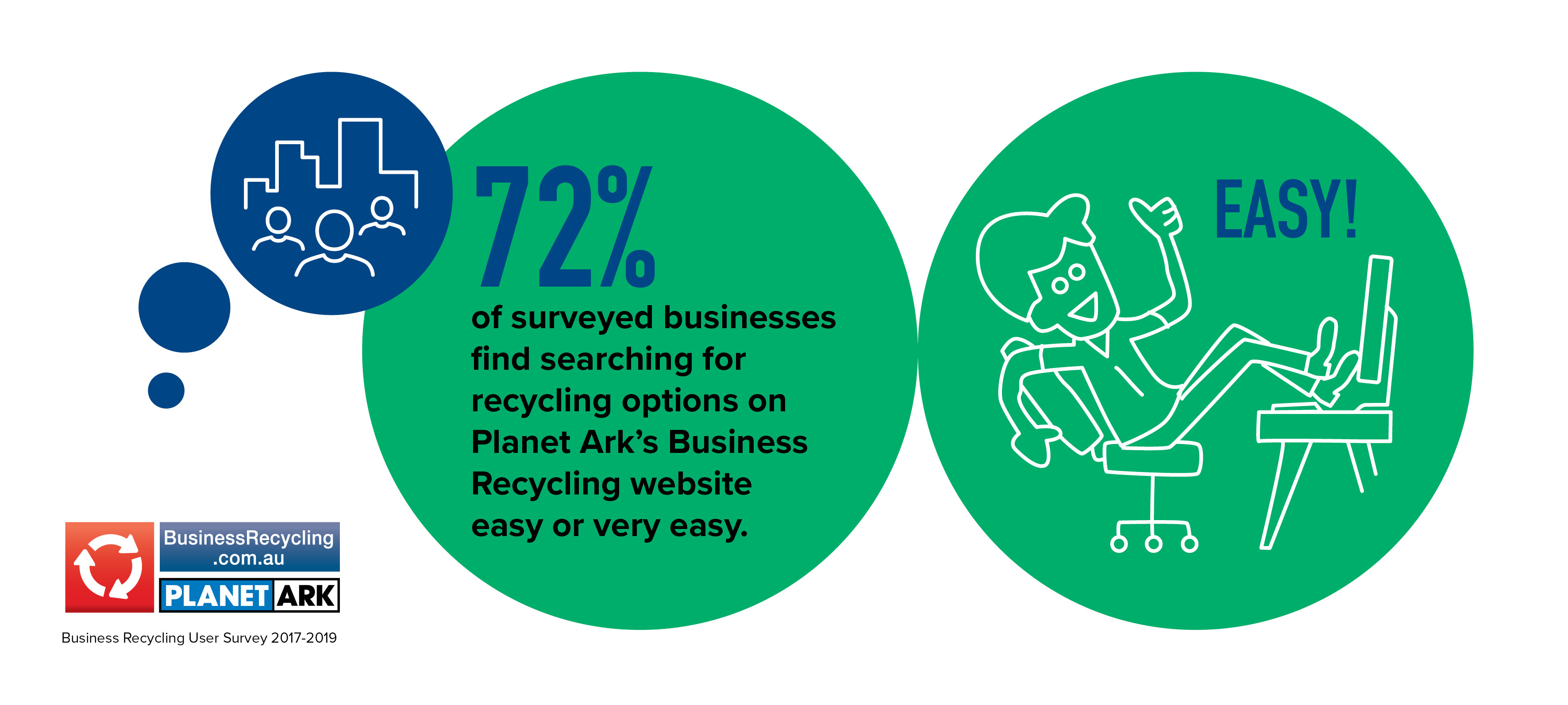
CHOOSE YOUR MYTH CATEGORY
Myth: I can put anything in the recycling bin because if it’s wrong they will sort it out at the processing centre
Busted: When recycling, it's better to leave it out, if in doubt
Here's why
- Wishcycling - This occurs when keen recyclers place something that doesn’t belong in the recycling bin in there anyway, hoping that it will somehow get recycled. Whilst this behaviour is well-intentioned, it actually causes contamination (see below). There is no recycling fairy!
- Contamination – This occurs when items that shouldn’t be put in the recycling bin get mixed in with recyclable items. This affects the recycler’s ability to effectively recover those resources, leading to more materials going to landfill. Contamination could include plastic bags to food and liquid waste to dirty nappies.
- Recycling technology varies - Material Recycling Facilities can vary in the kind of technology they use and how they sort items. After the materials are tipped onto a conveyor belt, staff often manually remove contaminants. Then fans are used to separate paper, magnets pick up steel containers, optical senses detect different types of plastic, eddy currents repel aluminium cans and glass continues on until loaded onto trucks.
Watch the below video to see how sorting works
Choose your actions!
-
- Recycle right by looking for the Australian Recycling Label and checking what your council accepts at RecyclingNearYou
- Check whether there is a local drop-off recycling solution for items that don't belong in the council recycling bin like electronic waste, paint or coffee capsules.
Choose Your Actions
Good
Better
Best
Myth: It’s fine to put plastic bags and other soft plastics in the recycling bin
Busted: Soft plastic and recyclables in plastic bags should be kept out of the council recycling bin
Here's why
- Common offenders - Soft plastics1 (like bread bags and bubble wrap) and bagged recyclables are the most common offenders according to councils2.
- Processing problems – Soft plastics and plastic bags get caught in the machinery and cause processing problems. They can also contaminate the paper and cardboard recycling streams along with other, more easily recyclable types of plastics.
- Bagged recyclables – They can not be sorted and are manually removed with the whole bag sent to landfill, wasting your recycling efforts.
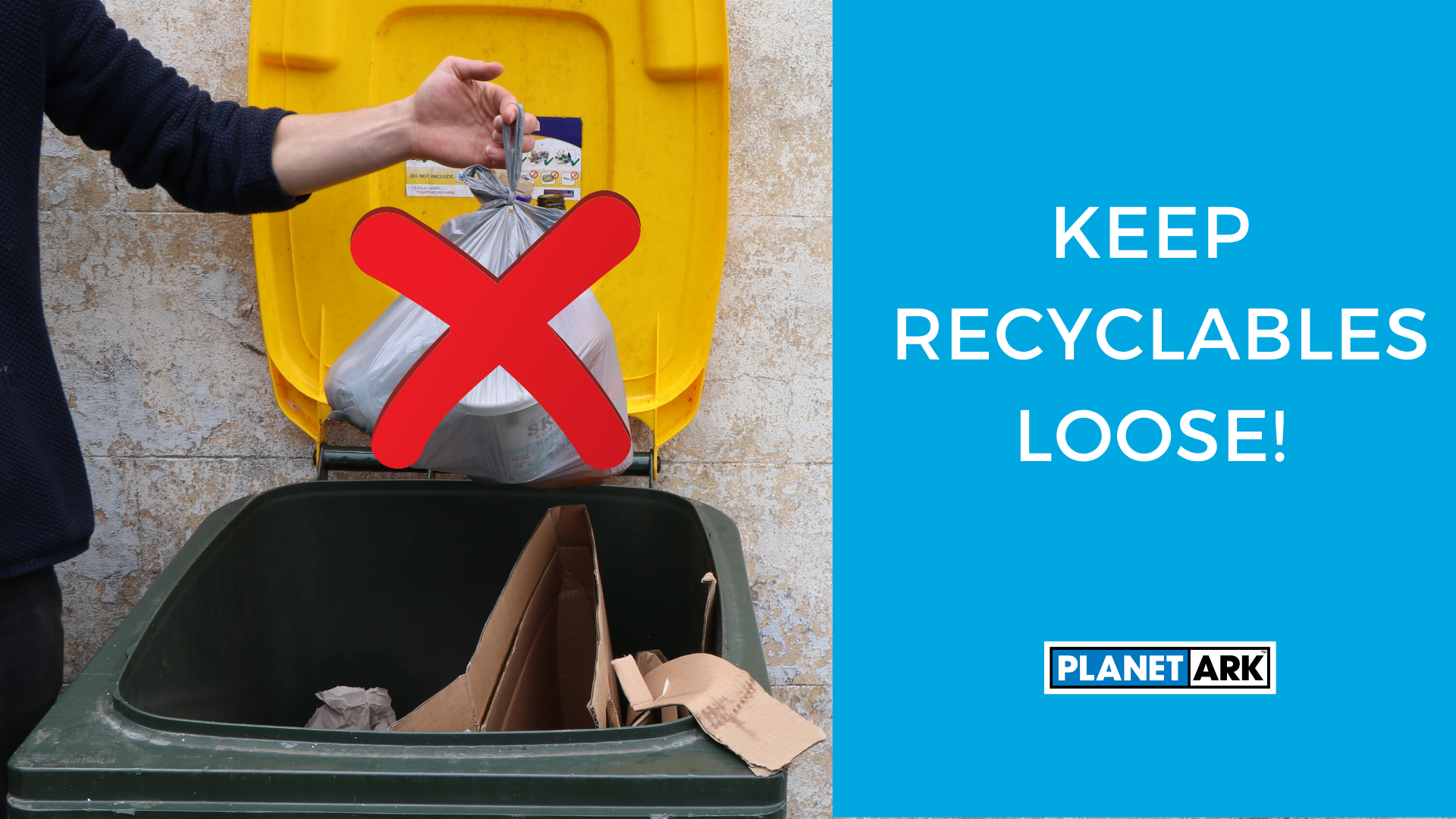
Choose your actions!
- Plastic bags and soft plastics such as rice, pasta, lolly, chip packets and bubble wrap can be dropped off at Coles and Woolworths stores for recycling by REDcycle.
- Keep your reusable shopping bags in the car or work bag so you remember them.
- Buy products with minimal or no packaging or buy in bulk to cut down on the amount of soft plastics you consume.
1There are a handful of councils that can accept bags and soft plastic
2National Recycling Week 2018 From Waste War to Recycling Reboot Report
Choose Your Actions
Good
Better
Best
Myth: You can't recycle beverage cartons
Busted: The majority of councils accept beverage cartons
Here's why
- Cardboard - Cartons are made mostly of cardboard, which can be recycled and made into new products. A one-litre Tetra Pak fresh milk carton is made up of 88% cardboard.
- Council majority - An overwhelming majority of councils servicing over 90% of the Australian population accept fresh beverage cartons for recycling. Most councils also accept long-life, foil-lined cartons and you can check whether this service is available in your local area by visiting RecyclingNearYou.com.au (WA councils do not accept foil-lined cartons).
- Mixed paper bales - Some paper recyclers do not want cartons in their recycling streams as they say it degrades the value of the recycled paper fibre. On average, fresh beverage and long-life, foil-lined cartons make up just 0.6% of mixed paper bales sorted at recycling sorting facilities.1 While cartons entering the mixed paper stream is not ideal, from an environmental perspective it is a much better outcome than those containers being sent to landfill.
- How carton recycling works
- Cartons are sorted into mixed paper bales before being sent to paper mills for recycling, either locally or overseas.
- At these mills, cartons are added to large machines called Hydrapulpers – essentially a giant blender – that use water to break the cartons down into two component parts.
- The paper pulp is separated and used to make a variety of paper products, such as paper towels, tissue and paper bags.
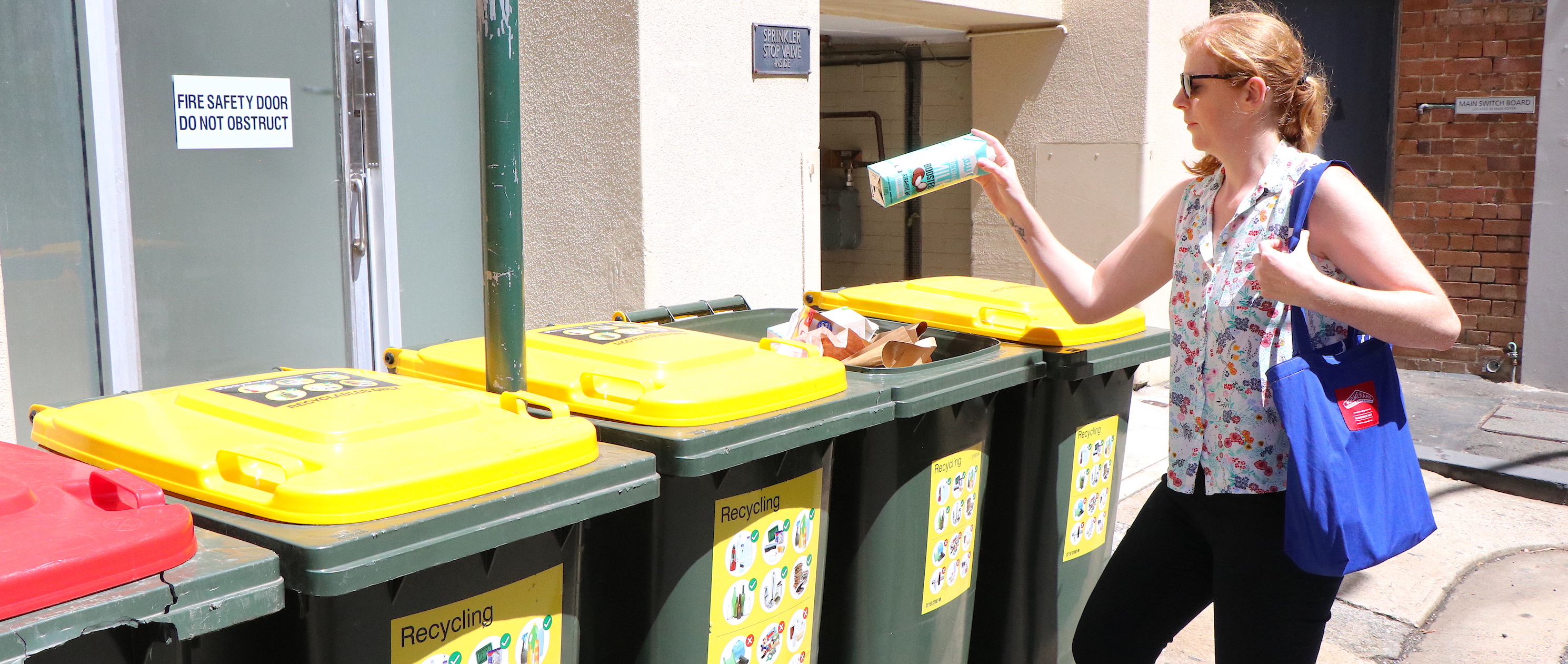
Choose your actions!
- Check locally if your council accepts long life foil-lined cartons for recycling by visiting RecyclingNearYou.com.au.
- Empty and flatten cartons before putting them in the home recycling bin.
- Flavoured milk and juice cartons under one-litre can also be recycled via container deposit schemes.
1Australian Packaging Covenant Organisation (2019) Polymer Coated Paperboard Working Group 2018
Choose Your Actions
Good
Better
Best
Myth: Items put on the nature strip will be sorted out and recycled by councils
Busted: It's illegal to dump items on the nature strip without approval
Here's why
- Illegal dumping - Unfortunately, illegal dumping is a continued problem faced by councils and charities nationwide. In fact, 64% of councils in NSW alone face up to 100 incidences of illegal dumping each year and are subsequently burdened with associated clean-up costs.1
- Bulky goods collections - Your council may offer options and guidelines for bulky goods collections. These may differ in different areas.
- Recycling - Residents have more options than ever when it comes to recycling and responsible waste disposal. Many councils offer free recycling for white goods, electronic waste and mattresses.
Choose your actions!
- Check what services your council provides for bulky goods or chemical cleanouts at RecyclingNearYou.
- Find drop off locations near you for items such as mobile phones, printer cartridges, televisions, computers, whitegoods, paint and more RecyclingNearYou.
- For ideas on how to repair, donate, trade or exchange pre-loved items, check out Planet Ark’s Reuse Hub.
1NSW Illegal Dumping Strategy 2017-21
Don't miss out on discovering the Top 7 Recycling Mythbusters!
Choose Your Actions
Good
Better
Best
Myth: Plastic bottles can’t be recycled more than once
Busted: Plastic bottles can be recycled again and again
Here's why
Nine in ten Australians know that plastic bottles can be recycled in your kerbside council recycling bin.1 PET (what most plastic beverage bottles are made out of) can actually be recycled numerous times into plastic bottles and other items, such as shoes, carpet and backpacks. There is a strong market for certain types of recycled plastic and PET is one of them, which means recycling centres are keen to get their hands on your plastic bottles.
Coca-Cola Australia recently announced that by the end of 2019, all of Coca-Cola’s bottles, 600ml and under, will be made out of 100% recycled plastic (rPET). This move will reduce the amount of virgin plastic used by around 10,000 tonnes per year, while also increasing demand for recycled plastic domestically.
Choose your action!
- Vote with your dollars and look for plastic packaging that is recyclable and made with recycled content .
- Ask your favourite brands if they intend to use more recycled plastic in their packaging.
- Make use of Container Deposit Schemes in your state.
1Planet Ark commissioned research by Pollinate 2019
Choose Your Actions
Good
Better
Best
Myth: Biodegradable and compostable plastic
Busted: Biodegradable and compostable plastic are not recyclable at home
They can't be recycled from home
Many brands today are trying to improve their sustainability by providing biodegradable or compostable packaging, but these claims can often add to recycling confusion. Neither biodegradable or compostable packaging should be disposed of via your kerbside council recycling bin as it results in contamination of the plastic and recycling stream.
- 63% of Aussies incorrectly think biodegradable and compostable plastic items can be put in the recycling bin. A further 12% are unsure, meaning only 25% of us are getting it right.1
- Food Organics and Garden Organics (FOGO) collections have been introduced by a number of Australian councils (75 out of 538), however not all accept compostable plastic packaging.3
- When littered all types of plastic will persist in the environment for a length of time with the possibility of affecting wildlife.






Choose your action!
- Avoid single-use plastic like takeaway containers, straws and utensils where possible.
- Find where you can BYO container via Trashless Takeaway.
- If your council has a FOGO collection, check if compostable packaging is accepted via RecyclingNearYou or contact your council directly.
- If you have home composting, look for ‘Home Compostable’ verification AS 5810-2010 on packaging to be sure the item will be composted.
1Planet Ark commissioned research by Pollinate 2019
2Australian Packaging Covenant Organisation (2019)
Biodegradable & Compostable Packaging Working Group 2018,
Don't miss out on discovering the Top 7 Recycling Mythbusters!
Choose Your Actions
Good
Better
Best
Myth: Coffee capsules cannot be recycled
Busted: Aluminium coffee capsules can easily be recycled
Here's why
We all love our coffee, but we love it even more when nothing is waste and after use it is dealt with sustainably. Thanks to Nespresso, it’s now easy to recycle their aluminium coffee capsules. Once capsules are collected by Nespresso the used coffee is sent to an industrial composting facility to be transformed into compost, while the aluminium is recycled and sent back to the aluminium industry to produce new products. Furthermore, 93% of Nespresso coffee is responsibly sourced through Nespresso's AAA program which is a partnership with Rainforest Alliance. They only use the exact amount of energy and water to make a cup of coffee, so it has a lower environmental impact than some might realise.
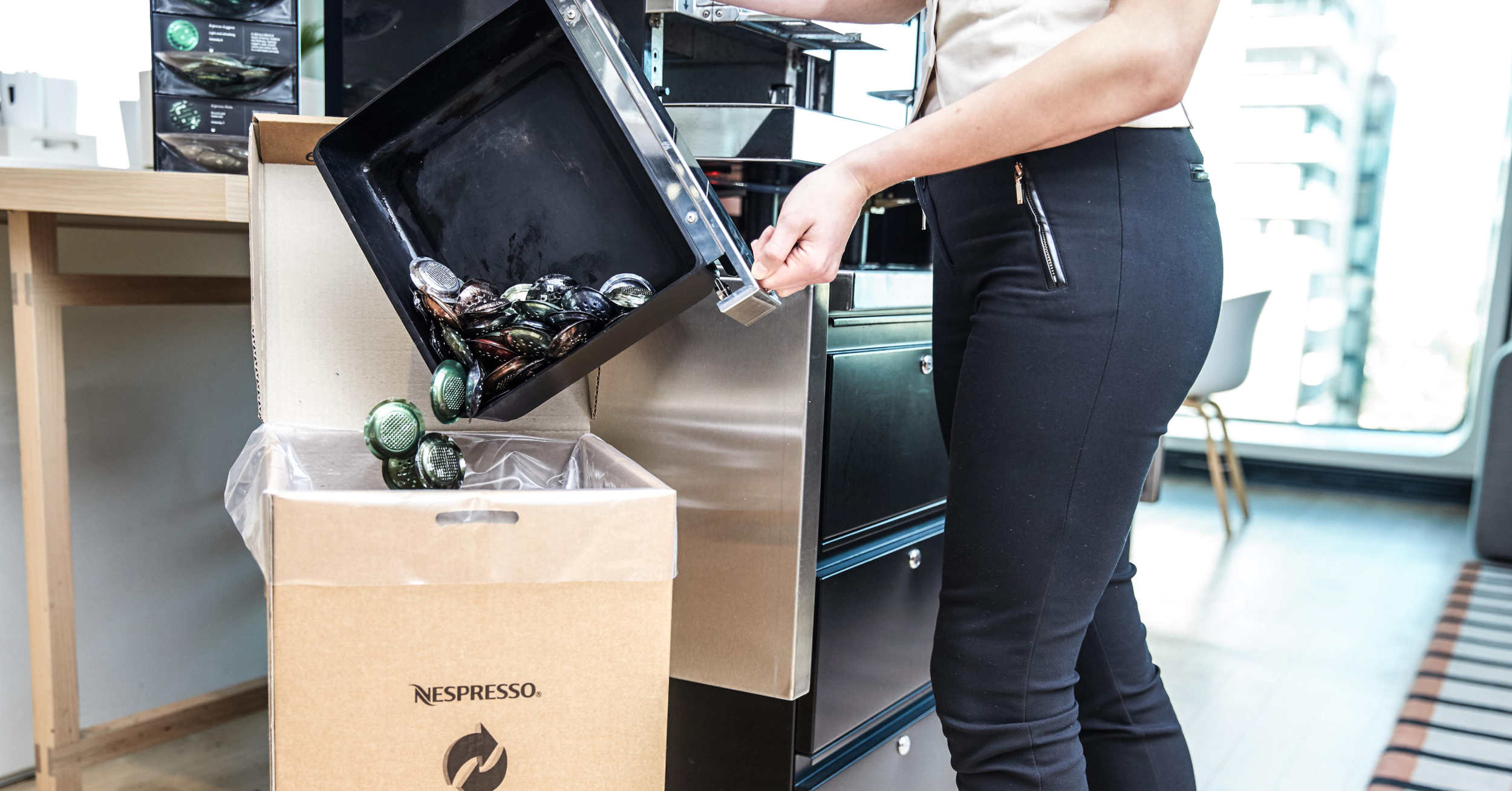
Choose your actions!
- Used aluminium coffee capsules can be recycled through one of four methods by Nespresso:
-
- Participate in the bulk recycling collection initiative where workplaces or community locations can become a recycling point. Find out how your workplace can become a collection point here.
- Return your used aluminium capsules to any Nespresso Boutique.
- Drop off your used capsules at a participating florist or garden centre collection point. Find your closest collection point here.
- Post your used capsules back to Nespresso using a special Australia Post recycling satchel.
- Check with other manufacturers to find out if they run a recycling program for their capsules. Visit Terracycle for information on their coffee capsule programs.
Choose Your Actions
Good
Better
Best
Myth: Charity organisations value whatever you give them, even if it’s old or dirty
Busted: Unusable donations cost charities millions of dollars each year

Source: The National Association of Charitable Recycling Organisations
Here's why
When donating items to charity stores, first ask yourself: “Would I give this to a friend?”. Charity op shops are currently paying $13 million a year to send unusable donations to landfill, which account for about 60,000 tonnes of waste.1 Quality charity donations are still highly desirable though as they create social, environmental and economic benefits, including diverting over 588,000 tonnes of waste away from landfill.2
Choose your actions!
- Find your nearest charity on RecyclingNearYou.
- If your old items aren’t friend-worthy, don’t worry - there are many other options available:
- Towels and bedding are often needed by animal shelters or vets.
- Old clothing and textiles are accepted at H&M, Zara and Manrags to be reused or recycled.
- Sheridan accepts your pre-loved sheets and towels (any brand) at your local Sheridan Boutique, Studio or Outlet store.
- Mattresses can be often be recycled by local councils or returned when purchasing a new one.
- White goods like fridges can be recycled via take-back schemes, bulky goods collections and resource recovery centres.
- Mobile phones can be recycled with MobileMuster, televisions and computers via the National Television and Computer Recycling Scheme, and for other electrical appliances search RecyclingNearYou.
- Have other items that are beyond the point of donation? Visit RecyclingNearYou.com.au to find recycling options.
- Celebrate everything secondhand and pre-loved during National Recycling Week on Saturday 16 November 2019 with Buy It Back Day.
1NACRO https://www.nacro.org.au/charities-spending-millions-on-waste/
2NACRO https://www.nacro.org.au
Choose Your Actions
Good
Better
Best
Myth: Container deposit schemes aren’t worth my time or effort
Busted: Container Deposit Schemes benefit both you and the environment in numerous ways
Here's why
Container Deposit Schemes (CDS) focus on the ‘polluter pays’ principle, where the industry responsible for creating a certain type of waste takes responsibility for managing that waste. In the case of beverage bottles, this involves providing collection recycling points for specific types of beverage containers, where the public can earn a refund for returned bottles, cans and cartons. It is also an example of product stewardship legislation in which the beverage industry is taking greater responsibility for its packaging after it has been sold.

Choose your actions!
CDS is a great way to recycle your beverage containers for three reasons:
- Cleaner recycling stream: It gives your containers the best chance of being recycled because there is less chance of different materials being mistakenly mixed in. The materials collected are sorted efficiently, producing a high quality, clean product that has a strong market value. Thus it has a better chance of saving energy, water and resources.
- Educates kids: It’s a great way to educate kids about recycling and get them to do their bit for their community, while also giving them the chance to earn a bit of pocket money. And if you don’t need the extra cash, you can give it away to a charity or not-for-profit organisation.
- Reduces litter: The proportion of beverage containers littered on the coasts of Australia is 40% lower in states with CDS. Before the introduction of CDS in NSW beverage containers made up almost half of litter, but NSW EPA reported a reduction of 57% in littered beverage containers this year.
For more information about the container deposit scheme in your state check out RecyclingNearYou.
Don't miss out on discovering the Top 7 Recycling Mythbusters!
Choose Your Actions
Good
Better
Best
Myth: Recycled products are in limited supply
Busted: We are surrounded by products made from recycled materials
Here's why
There’s no denying that the uptake of recycled content around the world has been a little on the slow side. However, many people would be surprised to find out just how many products and packaging materials have recycled content. Planet Ark research showed most people are unaware that products like road surfaces (40%), carpet (50%) and steel cans (32%) can be made from recycled content.1
- Everyday products have recycled content - Aluminium beverage cans, steel food cans, newspapers, cardboard boxes and glass bottles and jars all have some recycled content. And there are many more!
- rPET - By the end of 2019, 7 out of 10 of Coca-Cola's plastic bottles will be made entirely from recycled plastic (rPET).
- Business innovation - Innovative businesses are driving the use of recycled materials in a range of commercial and industrial purposes, from glass and printer cartridges in road surfacing to tyres in playground equipment and soft plastic in outdoor furniture.
- Close the loop - Buying it back means you're saving the resources and energy that go into making products from virgin materials, reducing the need for mining, conserving raw materials and reducing waste going to landfill.
- Recycled target - In late 2018 the Australian Government joined business leaders to announce a target of 30% average recycled content in all packaging regardless of the material by 2025.
1Planet Ark commissioned research by Pollinate 2017
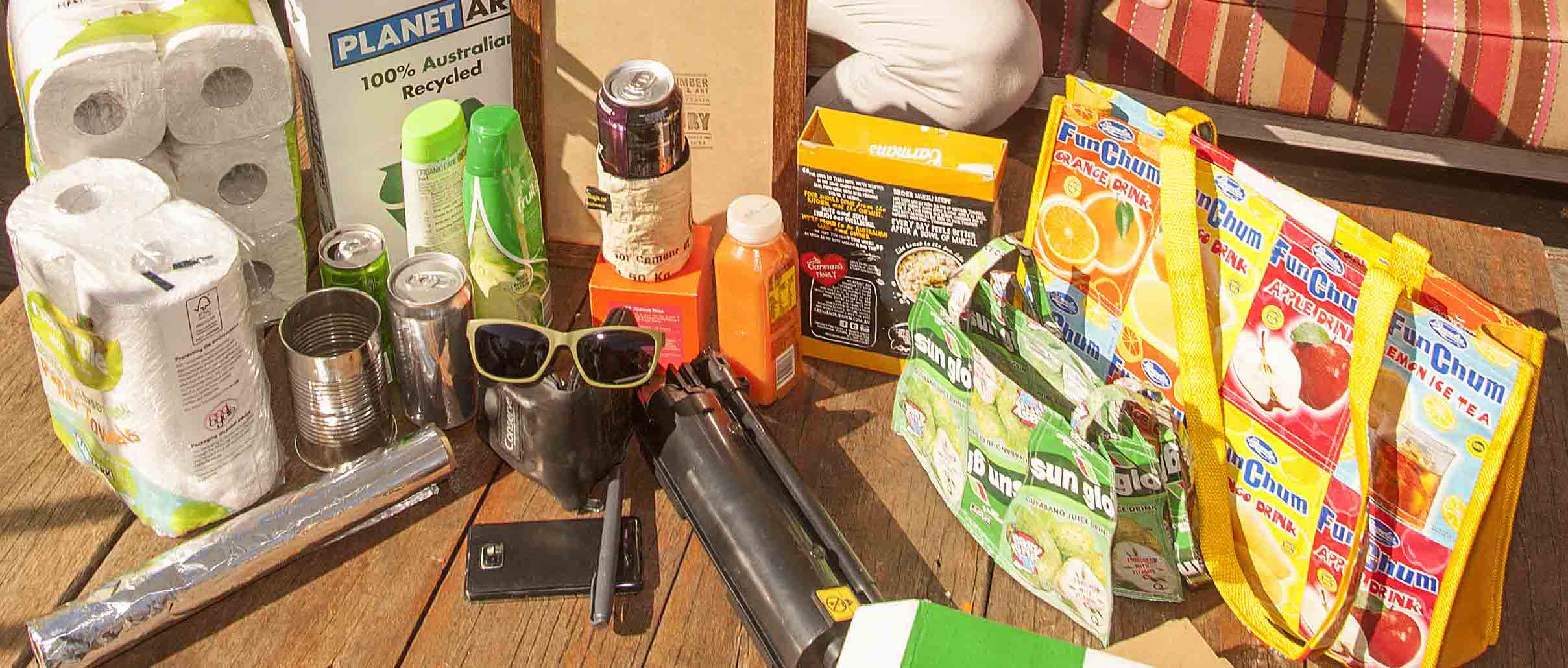
Choose Your Actions
Good
Close the recycling loop
- At the supermarket look for products or packaging with recycled content.
- Explore Planet Ark’s Recycled Product Directory.
- On Saturday 16 November 2019 get involved in Buy It Back Day!
Better
Improve business procurement
- Start small and switch to 100% Australian recycled office paper.
- At work implement a recycled content procurement policy.
- If you notice brands consistently using recycled materials, show your support with your wallet and let them know you appreciate it!
Best
Reduce & reuse
- Only buy what you or your workplace really needs.
- Repair, buy secondhand, swap or share.
Myth: The circular economy is only about waste and recycling
Busted: The circular economy is an innovative model for rethinking our approach to products and services
Here's why
The “circular economy” is quickly becoming a guiding force for sustainability efforts around the globe. It is a system which minimises waste and extracts as much value from a material resource as possible, rather than burying it in landfill. It contrasts the traditional linear system which has a 'take, make, dispose' model. It's also about connecting people, businesses and resources in design, manufacturing and end of life processing. It's a new paradigm and not just about recycling!
- Design for end-of-life: The circular economy is about designing out waste and pollution, creating new ownership models and innovative systems to recover material for reuse, recycling or composting. PREP software, which underpins the Australasian Recycling Label, is an example of a key driver for the design of sustainable packaging in Australia.
- Product stewardship schemes: Product stewardship is a key tool to facilitate a circular economy. Planet Ark sees a future where all companies act as stewards for the products they are selling, ensuring these products play a part in the circular economy.
- Organics composting schemes: Almost half of everything currently being landfilled in Australia is organic material, which breaks down anaerobically in landfill, generating methane, a potent greenhouse gas. A much better outcome for this organic material is composting, both home and commercial scale, so that it can be circulated back into gardening or agriculture, and improve the structure, fertility and health of our soils.
- Community education and engagement: Setting up the infrastructure to treat waste as a resource is not enough by itself. Such changes need to be coupled with comprehensive public education programs to ensure high community participation.
- National Circular Economy Hub: There is a strong need for a platform in Australia that inspires and facilitates the collaboration and networking necessary for our transition to a circular economy. Planet Ark is taking the lead on creating the National Circular Economy Hub and Marketplace, which will be Australia’s leading platform to accelerate our transition to a circular economy.
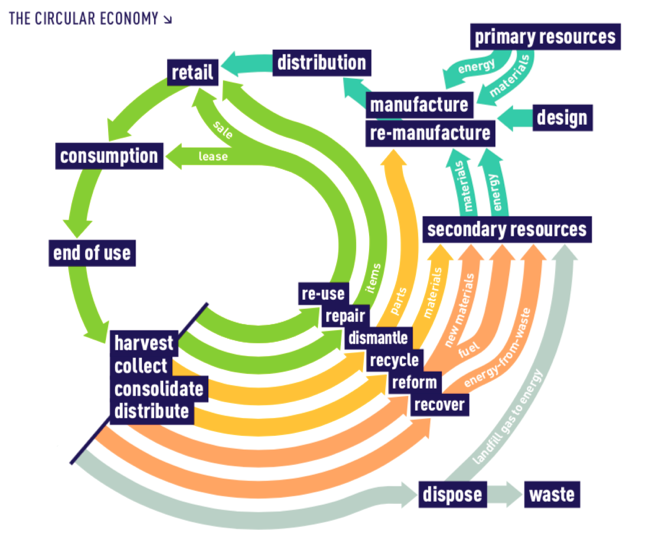
Source: SUEZ, A vision for England’s long-term resources and waste strategy
Choose Your Actions
Good
Recycle
- On packaging, look for the Australasian Recycling Label.
- Follow the Golden Rules of Kerbside Recycling.
- Recycle eligible materials with appropriate product stewardship schemes
Better
Reduce waste
- Avoid over-packaged products and single-use items
- Only buy what you need when grocery shopping by making a list and sticking to it
- Buy back items made from recycled materials
Myth: I should keep hold of my old phone in case I need it in the future
Busted: Most Australians never use their old phone again once replaced
Here's why:
When moving on to a new mobile phone, many of us struggle to get rid of our old one. However, research shows that 73% of Australians never use their old phones again, even if they’re in working condition.1 There are 25 million old mobile phones stored away in drawers across the country.

Choose your action!
- Reuse: You might be able to repair your old phone. The mobile phone manufacturers and network providers can help extend the life of your phone through their repair, reuse and trade-in programs. If you’re replacing a functioning mobile phone, try selling it for a bit of extra pocket money. Reuse programs including Boomerang Buyback, Mazuma Mobile, Mobile Monster and Phone Cycle all offer payment for trading in your old phone.
- Recycle: If your phone doesn’t have any resale value or has stopped working, then it can be recycled free of charge by MobileMuster. Find one of their 3,500 collection points nationwide on RecyclingNearYou.
Choose Your Actions
Good
Better
Best
Myth: If I recycle my mobile phone people might steal the data on it
Busted: Even if you’re unable to remove the data on your phone, MobileMuster destroys it in the recycling process
Here's why:
MobileMuster makes sure all the data on your phone is destroyed in the recycling process which involves disassembly, shredding and heating. However, before giving away, selling or recycling your old mobile you should remove your personal information. Luckily, it’s easy to protect your phone’s data.
Choose your action!
- MobileMuster provides easy-to-follow instructions on managing your data
- Contact your local mobile phone network provider to enquire about any data management services they may offer in-store
How to manage the data on your phone (Android)
How to manage the data on your phone (iOS)
Choose Your Actions
Good
Better
Best
Myth: You can’t recycle mobile accessories
Busted: Mobile phone accessories are accepted for recycling by MobileMuster
Here's why:
Many of the 25 million old mobile phones cluttering drawers nationwide are accompanied by a litter of accessories including cases, headphones, chargers and cables. Luckily, these accessories are also able to be recycled free of charge by MobileMuster. Diverting 99% of material from landfill, MobileMuster makes it easy to 'Marie Kondo' your drawers of old phones with 3,500 collection points across Australia.

Choose your actions!
- Find your nearest mobile recycling drop-off point on RecyclingNearYou.
- Give us your golden oldie mobile phone for National Recycling Week and get your workplace involved in a Monday Muster.
Don't miss out on discovering the Top 7 Recycling Mythbusters!
Choose Your Actions
Good
Better
Best
Myth: All recycling goes to landfill
Busted: Recycling does actually get recycled
The most common recycling myth as nominated by councils is that all recycling goes to landfill.1 In addition, Planet Ark commissioned research shows 36% of the population believe most of our recycling goes to landfill.2 No doubt the waste import policies of China and other countries have made it harder to find a home for our recyclables. The shutdown of recycling facilities, especially in Victoria, has led to a small number of councils having to send some recyclables to landfill until new markets are found. However, the vast majority of recycling collected by Australian councils is still getting recycled.
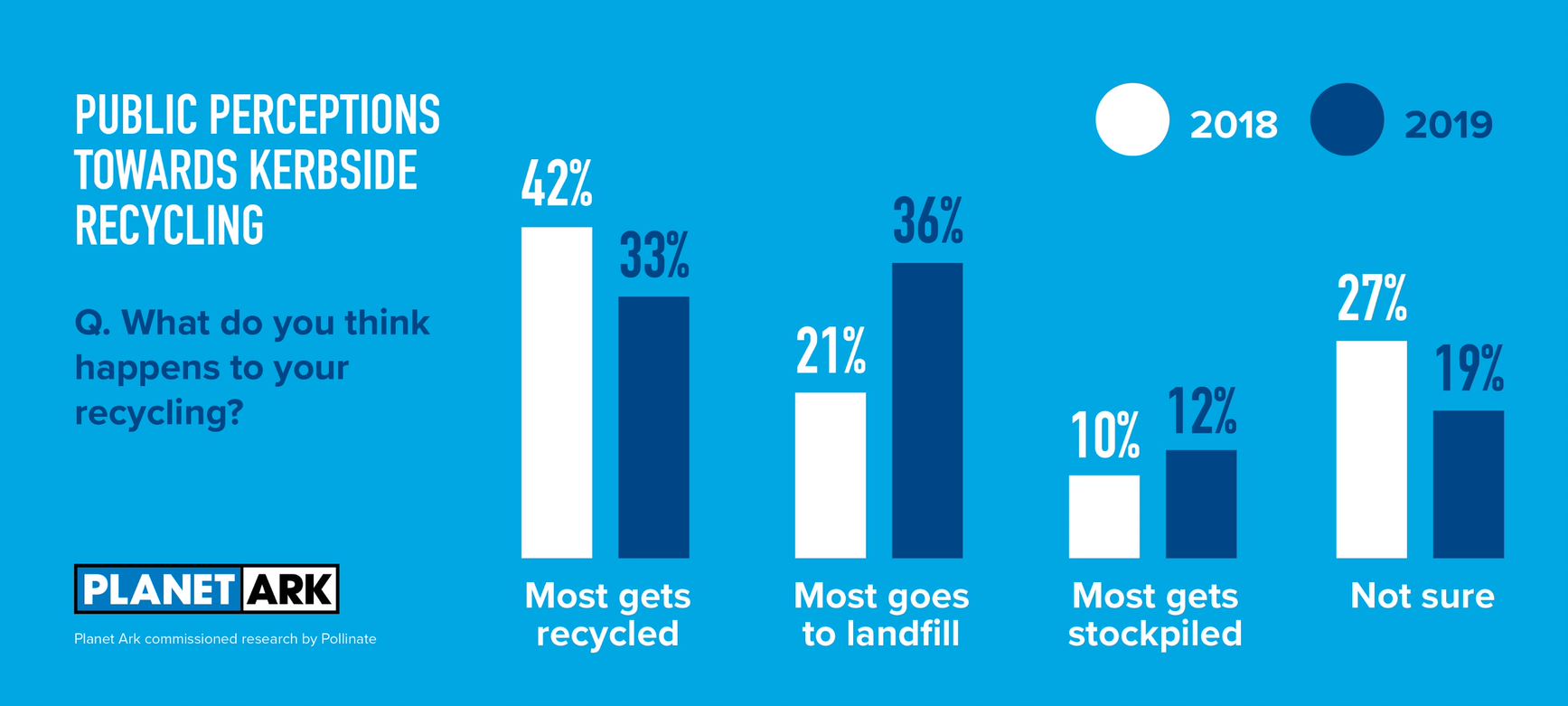
- Data shows 84 - 96% of kerbside recycling is recycled, and the remaining 4 - 16% that goes to landfill is primarily a result of the wrong thing going in the wrong bin.3 A small amount may currently also be disposed to landfill whilst waste facilities are transitioning to new markets for recyclables.
- The recycling process recovers and diverts over 37 million tonnes of materials such as aluminium, steel, glass, paper and cardboard and plastic away from landfills per year (only 12% of that is exported).4 Whilst there have been issues exporting plastic waste to Indonesia and Malaysia this represents a tiny proportion of the total amount of recycling. In Australia, we recycle 55% of all the waste collected from households, businesses and construction and demolition.5
- There are around 100 Material Recovery Facilities operating in Australia which separate out the different materials for recycling. If it all went to landfill, running these facilities would be pointless.
- Products made from recycled materials include plastic and glass bottles, aluminium cans, cardboard, paper, construction materials and roads.
- It doesn’t make economic sense to send recyclable materials to landfill. State landfill levies provide a financial incentive to recycle, ranging from $33 to $141 per tonne in VIC, WA, SA, QLD and NSW, which means it may cost more to dump waste in landfill.
1Planet Ark Council Survey 2019
2Planet Ark commissioned research by Pollinate 2019
3National Waste Report 2018
4Blue Environment (2019) Data on exports of Australian wastes
5National Waste Report 2018
Choose Your Actions
Good
Recycle right
- Look for the Australasian Recycling Label and checking RecyclingNearYou.
- Follow the Golden Rules of Kerbside Recycling.
- Buy back items made from recycled materials like paper and certain beverage containers.
Better
Reuse
- Reuse glass jars to store ingredients.
- Remember your shopping bags (put them in your work bag or car).
- Buy secondhand or upcycled.
Best
Reduce
- Avoid over packaged products and single-use items.
- Buy naked fruit and vegetables.
- BYO container and buy in bulk.
Myth: My recycling responsibilities are done once it’s in the bin
Busted: Unless you’re buying it back, you’re not fully recycling
True recycling occurs when items that you’ve put in your recycling bin or dropped off at a collection point are turned into new materials. In fact, recycling only works when products made from recycled materials are purchased by consumers, businesses and governments. This creates a circle of supply and demand and supports Australian jobs in the recycling and manufacturing industries.
- There are probably more items made from recycled materials than you realise with Planet Ark research showing most people are unaware that products like road surfaces (40%), carpet (50%) and steel cans (32%) can be made from recycled content.1
- Planet Ark research found 70% of Australians are more likely to buy products containing recycled materials.2
- Governments at all levels are adopting procurement policies that require products to contain a certain percentage of recycled material. Recently, nine councils in South Australia signed a memorandum of understanding (MOU) to prioritise the purchase of products made from recycled materials.
- Innovative companies such as Close the Loop and Downer are producing recycled road surfaces containing recycled glass, soft plastics and toner from printer cartridges collected via Cartridges 4 Planet Ark. Councils in every state are using this new recycled road surface with many more to come.
- By the end of 2019, every single bottle, 600ml and under, across Coca-Cola's range of beverages will by made with 100% recycled plastic.
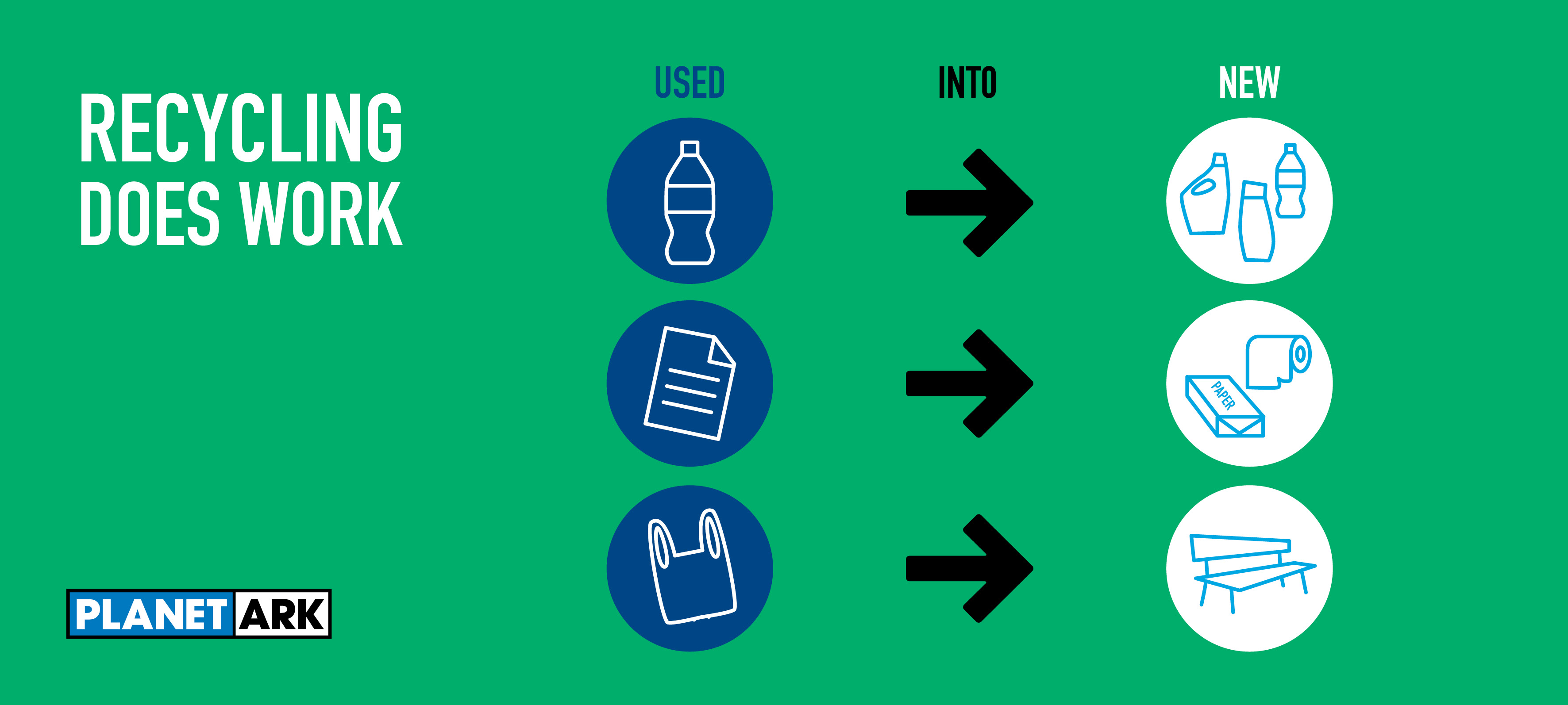
1Planet Ark commissioned research by Pollinate 2017
2Planet Ark commissioned research by Pollinate 2017
Choose Your Actions
Good
Close The Recycling Loop
- At the supermarket look for products or packaging with recycled content.
- Explore Planet Ark’s Recycled Product Directory.
- On Saturday 16 November 2019 get involved in Buy It Back Day.
Better
Improve Business Procurement
- At work implement a recycled content procurement policy.
- Contact your council and ask if they have a recycled content procurement policy.
Best
Reduce & Reuse
- Only buy what you really need.
- Avoid over packaged products and single-use items.
- Repair, buy secondhand, swap or share.
Myth: All plastic with a triangle symbol can be put in my kerbside recycling bin
Busted: The Australasian Recycling Label is the ONLY evidence-based recycling symbol!
Not all plastics are made equal. The triangle symbols with numbers one to seven (or Plastic Identification Codes) are used to represent the type of plastic the item is made of. While every plastic type is technically recyclable, not all plastics are accepted in council kerbside recycling.
- This is the second most common recycling myth as nominated by councils.
- Research from the Australian Plastics Recycling Survey 2016-17 revealed that out of the 3,513,100 tonnes of plastic consumed annually, only 11.8% of consumer plastic in Australia was recycled.
- The Australasian Recycling Label is an evidence-based system that provides easy to understand instructions on how to correctly dispose of every part of the packaging.
- 41% of Australians incorrectly think soft plastics can be recycled at home.1 Soft plastics like cereal and pasta bags, bubble wrap and plastic shopping bags should not go in your council recycling bin.2 Nor should recyclables be put inside a plastic bag (items should be put in loose in the recycling bin). These cause problems at the sorting facility.
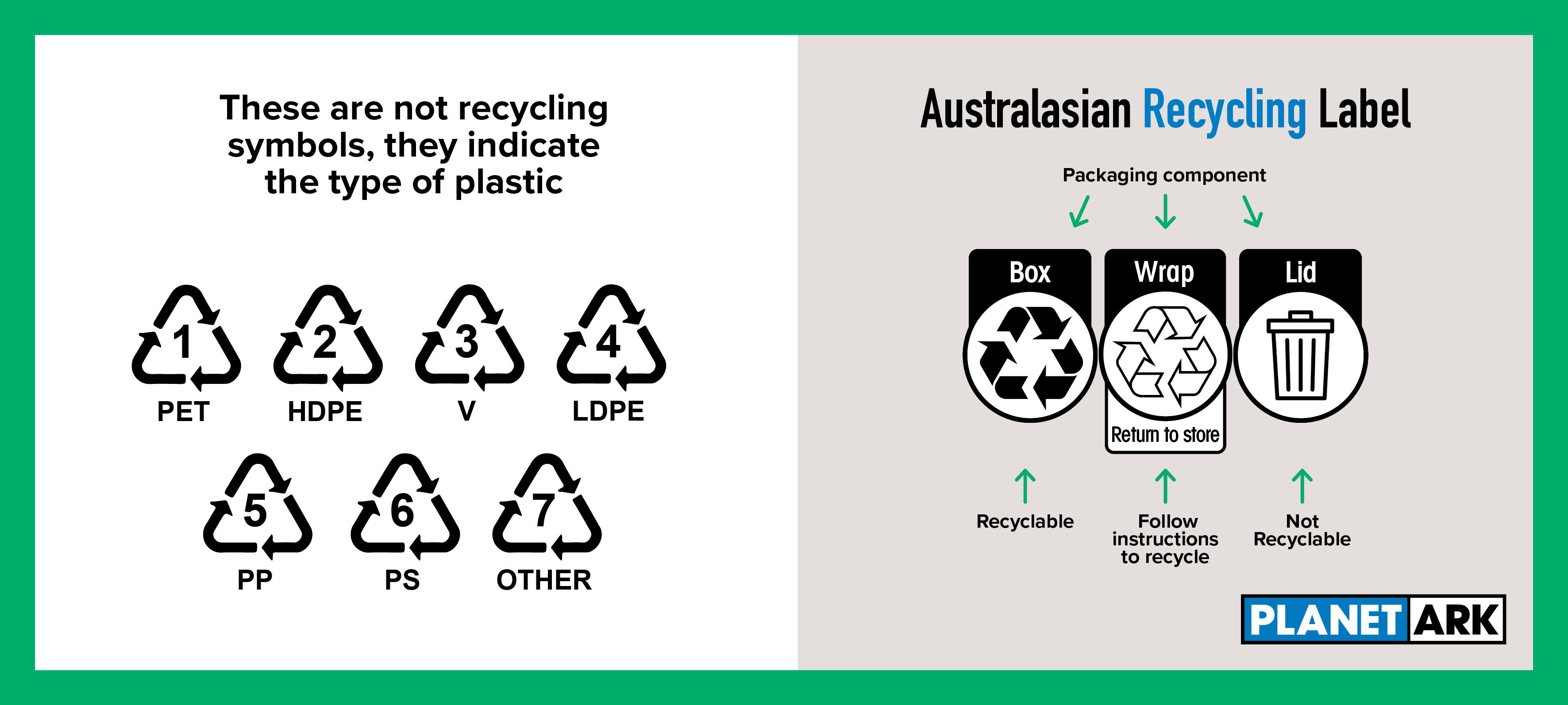
1Planet Ark commissioned research by Pollinate, Sep 2019
2A small handful of councils do accept soft plastics
Choose Your Actions
Good
Recycle
- On packaging look out for the Australasian Recycling Label.
- To find out what’s accepted and where check RecyclingNearYou
- Recycle your soft plastics at supermarkets through REDcycle.
Better
Reuse
- BYO takeaway container – search Trashless Takeaway.
- BYO fruit and vegetable bags.
- BYO coffee cup and water bottle.
Best
Reduce
- Avoid single-use items.
- Avoid packaging by buying in bulk at wholesalers
Myth: The only way to recycle is via my council recycling bin
Busted: There are other ways to recycle aside from council recycling
Most of us do our best to recycle through council kerbside recycling bins but this only makes up about 20% of the total amount of materials recycled in Australia.1 There are many other trusted2 , and often free, ways to recycle these items through awareness of these product stewardship schemes is not as high as council kerbside recycling – knowledge ranges from 61% for Cartridges 4 Planet Ark to 30% for FluoroCycle.3
- MobileMuster recycles all mobile phone components including all brands of handsets, along with their batteries, chargers and accessories, free of charge. With over 3,500 drop-off points nationwide, MobileMuster makes it easy to recycle your mobile phones and accessories.
- Cartridges 4 Planet Ark provides Australians with a free and easy way to recycle their used printer cartridges. Having recycled over 43 million cartridges, this program is highly accessible with over 3,500 public drop-off locations around the country.
- Nespresso has its own coffee capsule recycling program with more than 22,000 collection points in Australia.
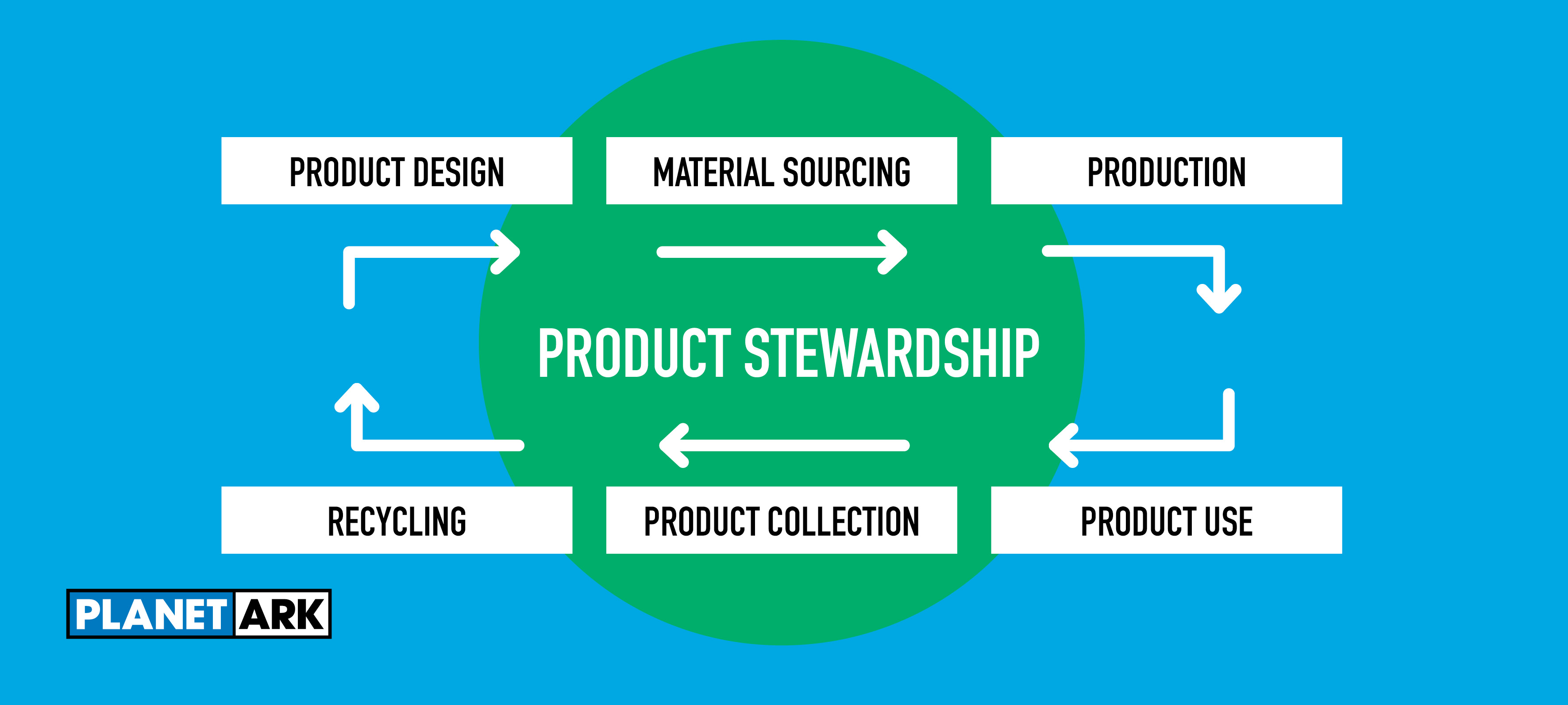
1 National Waste Report 2018
2 Trust in product stewardship recycling programs increased in the last 12 months with high trust in MobileMuster increasing from 33% to 42%, Cartridges 4 Planet Ark increasing from 42% to 45% and Nespresso coffee capsule program increasing from 20% to 34% (Planet Ark commissioned research by Pollinate 2019).
3 Planet Ark commissioned research by Pollinate 2019
Choose Your Actions
Good
Recycle
- Find drop-off locations for mobile phone, printer cartridge and coffee capsules.
- Find free pick-up and drop-off points for items like e-waste, paint, whitegoods and chemicals in your council area.
- Find out about other product stewardship recycling programs at RecyclingNearYou.
Better
Spread The Word
- To give the valuable materials in your old mobile a new life, host a fun Monday Muster at work in November!
- In your workplace, set up a new recycling system.
Best
Reuse
- If that unwanted phone, laptop or recreation gear is in good condition, pass it on via online platforms.
- Seek out a repair shop for broken tech, bicycles or electrical appliances.
Myth: It’s too hard to recycle at work
Busted: Recycling at work can be made easy
Does recycling at work feel overwhelming? Never fear Planet Ark’s Business Recycling is here. Whilst half of Australian businesses think they don’t do enough from a sustainability point of view1, the Business Recycling website provides tips to overcome the biggest barriers to workplace recycling, whether that be insufficient support from management, lack of staff training and motivation or simply the location of the bins and signage.
- 70% of Australian businesses are concerned about waste going to landfill and 74% are concerned about plastic in oceans.2
- 76% of surveyed businesses say they could be recycling more in their workplace. The top three reasons given for not recycling more are lack of education (44%), logistical difficulties (40%) and lack of time (25%).3
- 72% of surveyed businesses find searching for recycling options on Planet Ark's Business Recycling website easy or very easy.4
- Having recycling programs in place is not only good for the environment but research shows it is good for staff morale with three out of four employees agreeing that having recycling at work makes them feel better about their employer.
- Planet Ark have developed the War on Waste Toolkit for Business that provides ten free tools no matter where your workplace is on its journey to reduce waste and recycle more.
- Improved waste management can reduce unnecessary costs, boost staff morale, provide a competitive edge and improve environmental outcomes.
1HP Australian Environmental Sustainability Study 2018 in partnership with Planet Ark
2HP Australian Environmental Sustainability Study 2018 in partnership with Planet Ark
3Business Recycling User Survey 2017-2019
4Business Recycling User Survey 2017-2019
Choose Your Actions
Good
Start Small
- Start your workplace recycling journey with the No-Brainer Checklist.
- In your workplace for National Recycling Week, set up a new recycling system.
- To give valuable materials in your old mobile a new life, host a fun Monday Muster at work in November!
Better
Change Behaviour
- For workplace recycling options, search Business Recycling.
- Break the barriers to workplace recycling.
- Be smart and use behaviour change science.
Best
Go Circular
- Choose to reuse with tips from the War on Waste Toolkit for Business.
- Rethink waste and resources with the National Circular Economy Hub.
Myth: Food scraps are not an issue in landfill
Busted: Food scraps cause greenhouse gas emissions in landfill
What is in your bins when you take them out to the kerb each week? When it comes to food waste, Australians are some of the worst culprits with the latest National Waste Report finding food and garden organics make up about half of all kerbside garbage.1 Food organics were also noted by councils as a top 3 contaminant in the recycling bin.2
- Australians send 3.2 million tonnes of edible food to landfill each year, that’s close to 17,000 Boeing 747 jumbo jets3
- $890 each year4 is the cost of food waste for the average household, enough for a return flight to Fiji
- Food doesn’t belong in sealed landfills as they are anaerobic environments, meaning there is no oxygen available. In this environment organics rot and produce methane, a greenhouse gas 25 times more potent than carbon dioxide.
- Food scraps and liquid also don’t belong in recycling as it can ruin your good efforts and prevent recyclables from being recycled.
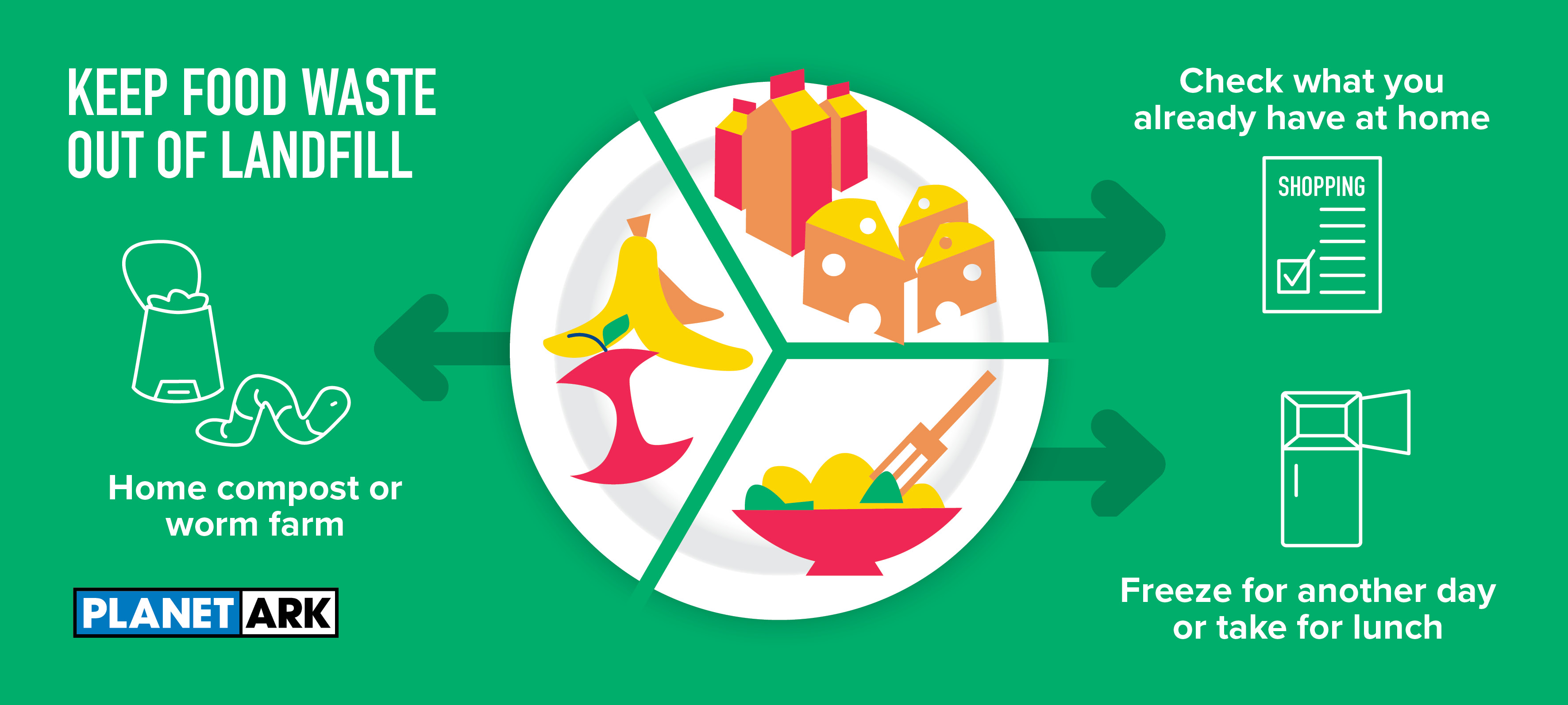
1National Waste Report 2018
2National Recycling Week Council Survey 2018
3National Food Waste Baseline 2019
4Radbobank Food Waste Report 2019
Choose Your Actions
Good
Go Zero Food To Landfill
- Starting your own compost heap at home. Check out our tips for composting and worm farming.
- Finding other options for food scraps at RecyclingNearYou.
- Give your containers a quick rinse with used washing up water before chucking them into the recycling bin.
Better
Deal With Leftover Food
- Trying your hand at making stocks and condiments from the parts of your food usually going in the bin (eg. Apple cores).
- Freezing anything that you could eat or use at a later date.
- Donating excess edible food to a food distribution charity like OzHarvest.
Best
Reduce Your Food Waste
- Always checking your pantry and fridge before shopping.
- Writing and sticking to a shopping list of what you need.
- Avoiding 2-for-1 deals if it means buying extra food you don’t need.
Myth: Recycling is my contribution to the environment
Busted: Reduce and reuse first, then recycle
It’s all about following the waste hierarchy! An easy way to remember is through the three Rs: Reduce, Reuse, Recycle. While recycling is important, reducing how much and what you consume (we’re looking at you non-recyclable single-use plastics!) is the most effective thing you can do to create less waste, generally followed by reuse and then recycling.
- 78% of Australians believe the most helpful action for the environment out of a list of options is to regularly recycle. Other actions included: reuse items where possible rather than buying new items (61%); buy products made with recycled materials (51%), and decrease my meat consumption (19%).1
- Recycling is a great place to start learning about living more sustainably and it does have major benefits like saving resources, energy and water as opposed to using virgin materials but it won’t solve our waste or climate issues on its own.
- Data from the Global Footprint Network shows Australia also has one of the biggest ecological footprints per capita (4th).
- Back in 2011, Time Magazine named collaborative consumption, also known as the sharing economy, as one of the top ten ideas that would change the world. It’s one way to help combat the impacts of overconsumption and waste. And with Australia’s sharing economy worth around $15.1 billion2 through the rise of tool libraries, toy libraries, clothing rental, car sharing, bike sharing, and adventure gear sharing, it looks like Time Magazine could be right!
- GOOD NEWS! Many of us are already climbing the waste hierarchy and reducing our ecological footprint.
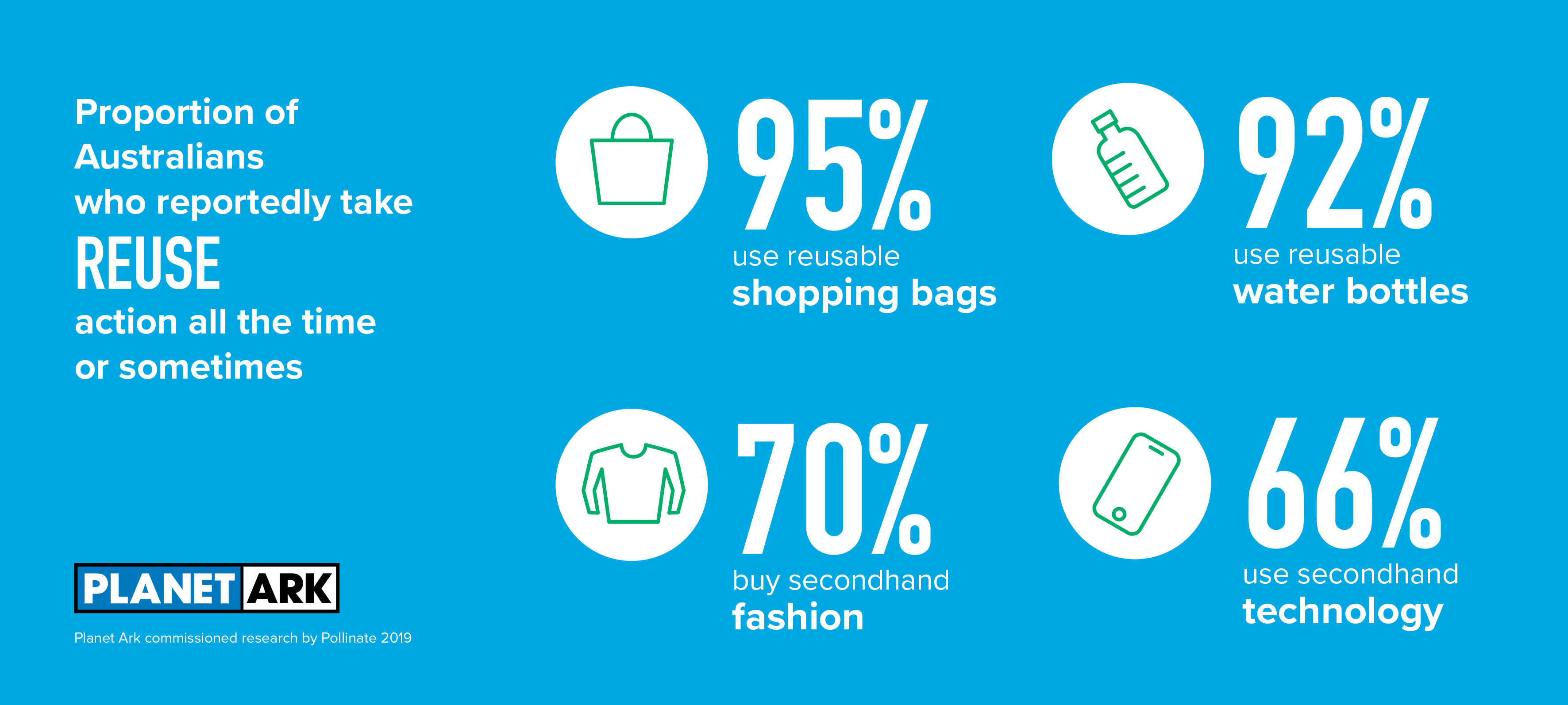
1Planet Ark commissioned research by Pollinate 2019
2Australian Ethical (2019) The Sharing Economy
Choose Your Actions
Good
Recycle
- Looking for the Australasian Recycling Label and checking RecyclingNearYou.
- Finding drop-off recycling options for mobile phones, printer cartridges, coffee capsules and more.
- Buying back items like pens and certain beverage containers made from recycled materials.
Better
Reuse
- Buying secondhand or upcycled.
- Getting yourself a reusable water bottle, coffee cup, takeaway container or reusable shopping bags.
- Checking out our list of 25 things you can reuse at home.
Best
Reduce
- Finding community reuse and repair initiatives like repair cafes.
- Joining the sharing economy.
- Asking yourself if you really need that new thing!







